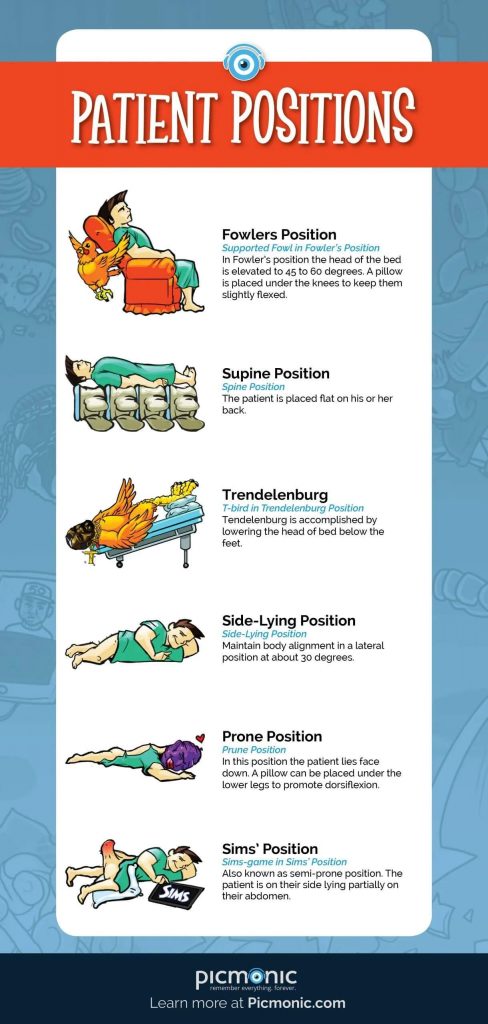Positioning a patient properly is an essential nursing care for the patient. Some positions are required for procedures while others are required that promote healing. It is vital that the patient’s safety comes first and proper communication takes place before moving the patient.

Some topics you will learn in this infographic:
Trochanter Roll:
This technique prevents external rotation of the hips when a patient is in a supine position. A rolled up towel is placed slightly underneath each hip.
Trapeze Bar:
This device can be placed over the bed to aid the patient in position changes, transfers, or performing upper-extremity exercises.
Fowlers Position:
Semi-Fowler’s, Fowler’s, and high-Fowler’s. In Fowler’s position the head of the bed is elevated to 45 to 60 degrees. A pillow is placed under the knees to keep them slightly flexed. The patient’s condition and illness will determine the angle of the head of the bed. If there is no restriction, then placing the patient in a position of comfort is best. The position is used to improve ventilation and also chest tube drainage. Remember that there is also semi-Fowler’s (HOB 30°), and high Fowler’s (HOB 90°).
Supine Position:
The patient is placed flat on his or her back. Might be required for a patient to stay in this position after a spinal injury or after certain procedures. Use trochanter rolls and pillows to aid in patient comfort and relieve pressure points.
Side-Lying Position:
Used when turning patients to avoid pressure ulcers. Prevents supine vena cava syndrome in pregnancy. Increases uterine and renal perfusion during pregnancy. Maintain body alignment in a lateral position at about 30 degrees.













